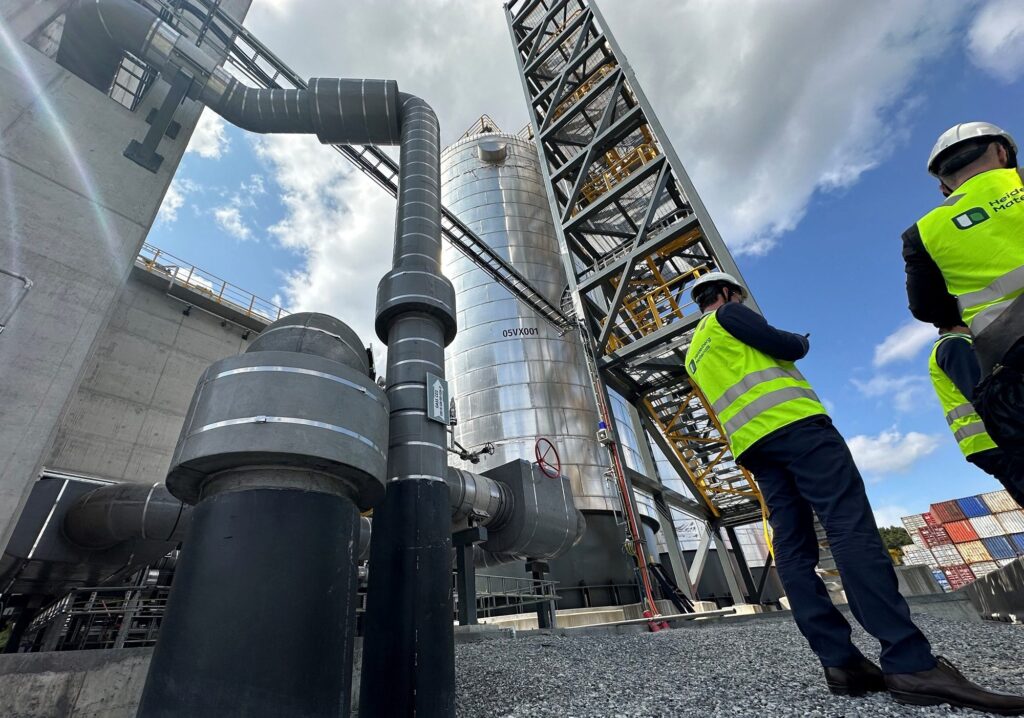The number and complexity of carbon capture and sequestration (CCS) projects in the Middle East show that efforts to combat climate change and meet international commitments are being taken seriously.
While regional CCS operational capacity today is about 3.8 million tonnes per year (mtpa) of carbon equivalents – a drop in the ocean in the context of 37,800 mpta globally last year, according to the IEA – goals over the next decade for individual companies and countries call for much higher levels.
These include the UAE’s Adnoc aiming for 10 mtpa, QatarEnergy (11 mtpa), Saudi Aramco (14 mtpa) and Saudi Arabia’s national goal of 44 mtpa.
One interesting example is the Al Reyadah project for Emirates Steel Industries in Mussafah, Abu Dhabi.
This is the first CCS installation for the iron and steel industry and has been in operation since 2016, capturing carbon dioxide from a direct reduced iron unit, using traditional amine absorption – a chemical process that reduces acid gases such as CO2.
Al Reyadah produces an exceptionally rich carbon dioxide stream – the richer, the better when it comes to safety and efficiency – and is used for enhanced oil recovery.
Other countries and companies have similar goals, sometimes defined in specific tonnage, with some specifying reduction amounts. All told, region wide, combined reduction efforts aim at 65 mtpa. Some CCS units are being built as part of new projects, while others are being added to brownfield facilities as upgrades.
The burden of proof for supporting data is on the producer
Buried within all those macroeconomic goals are countless individual processes and CCS units, all adding to the total.
As a case in point, Aramco’s Jubail hub alone has a programme in development to capture and store 9 mtpa by 2027.
This objective, like others, requires careful measurement using many of the same technologies used for custody transfer of conventional oil and gas products.
Depending on the circumstances, it may be necessary to provide precise and detailed data on how CCS processes are performing.
Here are four typical scenarios:
The company operating a sequestration site will charge for its service. The providers, individual plants and pipeline companies, must pay based on the amount of carbon dioxide pumped into the ground. This is a basic custody transfer situation.
If the producer is subject to a carbon auction system, any CCS programme will reduce the number of permits that must be purchased. However, it will be necessary to prove how much carbon dioxide has actually been captured and sequestered to justify the reduction in permits.
If the producer is subject to a carbon cap-and-trade system, any CCS programme will free up unused permits for resale. To facilitate such exchanges, it is necessary to prove to the buyer and regulator that the amount of carbon captured is correct before the sale can take place.
If a company has carbon reduction goals outlined in larger sustainability programmes, it is necessary to prove to internal stakeholders and external shareholders that these efforts are having the desired effects. Auditors will want to see hard data to prove how much carbon dioxide has actually been sequestered.
These four areas overlap and more than one could easily apply in a given situation. The burden of proof for supporting data is on the producer.
Consequently, monitoring CCS processes and custody transfer can’t be a haphazard effort with a few instruments cobbled together. If money is changing hands, emissions credits are exchanged or data is going into financial reports, the relevant parties will want auditable proof of what has transpired.
Data required includes a combination of the amount of carbon dioxide, normally a mass measurement expressed in tonnes, along with the actual concentration of carbon dioxide, as most streams will include some proportion of other gases.
Ultimately, the actual carbon dioxide tonnage must be determined. This calls for two types of instrumentation: an analyser to determine the chemical makeup, plus a flow metre capable of determining tonnage.
Information collected from these and other instruments in the capture process must be integrated into a larger system capable of recording and storing historical data and analysing it so it can be presented suitably to satisfy both parties in the transaction, as well as regulators.
An auditable digital thread for CCS is very similar to the custody transfer systems, widely used throughout other industries, such as for measuring transfers of fossil fuels.
Companies are reducing their emissions by using CCS strategies, along with calculating the possible value of selling their excess reduction as a new income stream.
Partnering with a single provider able to support all aspects of such a programme can shorten the development time and ensure successful project execution.
Seth Harris is the director of sustainability solutions sales in the Americas for Emerson



